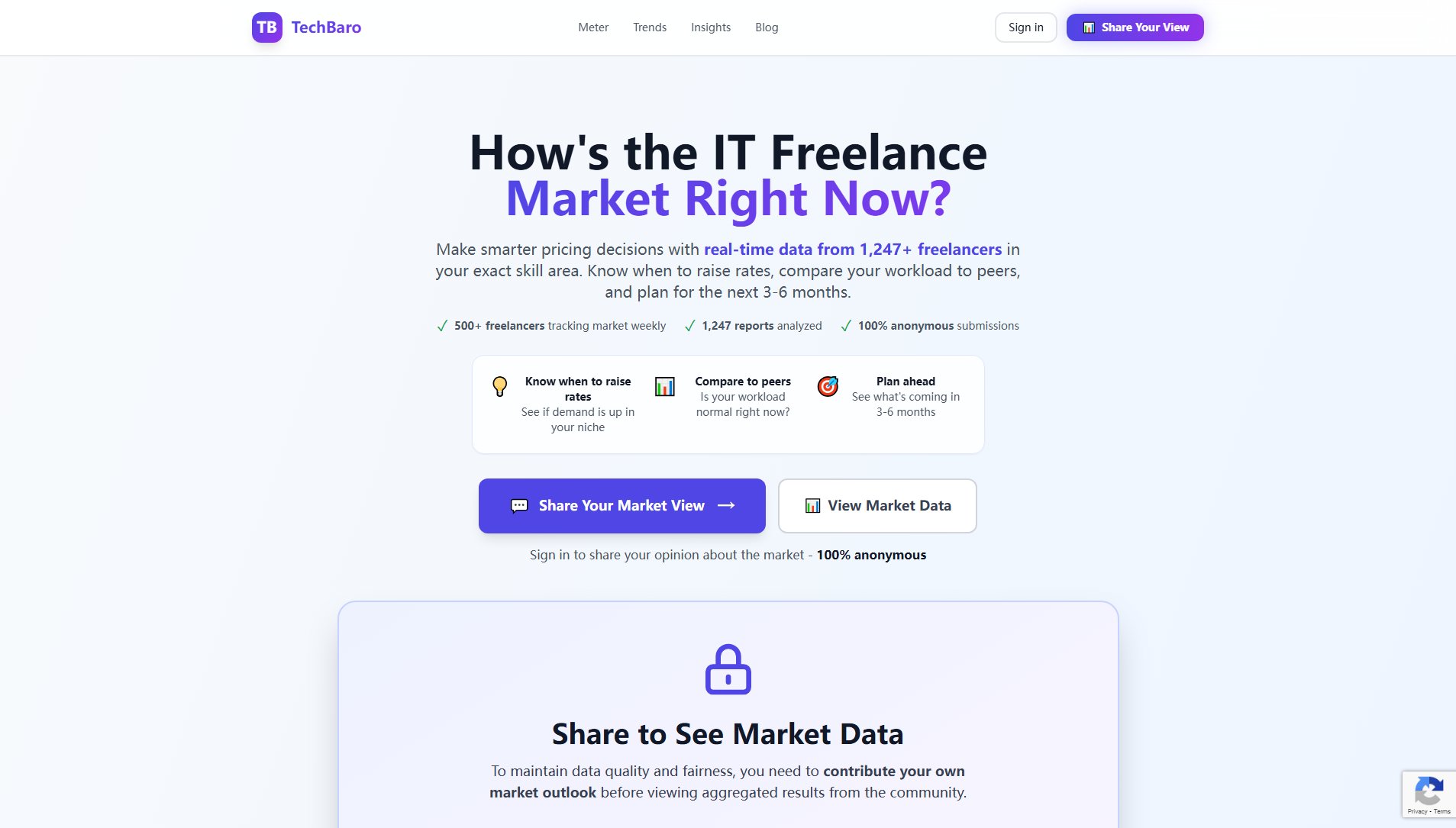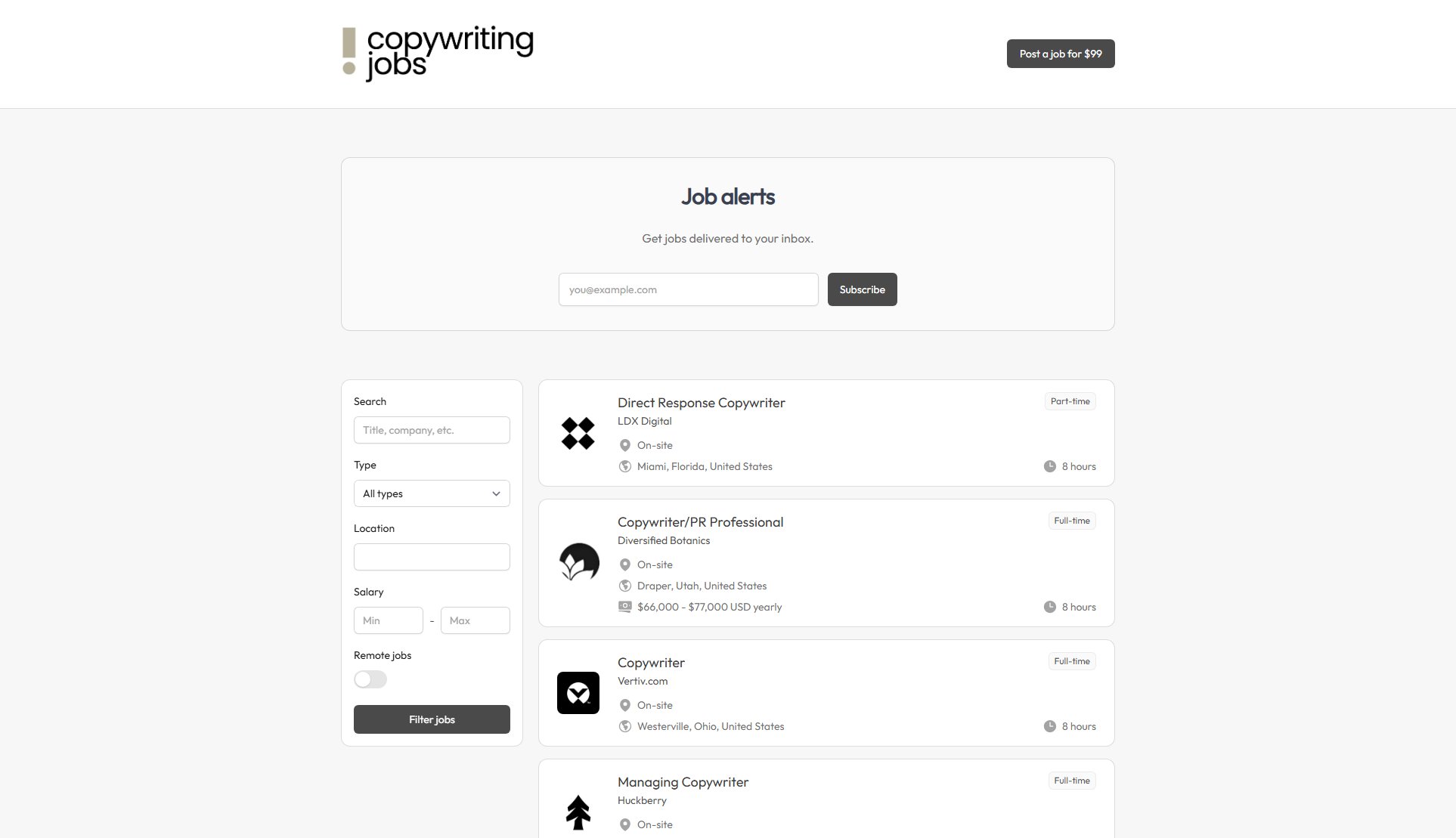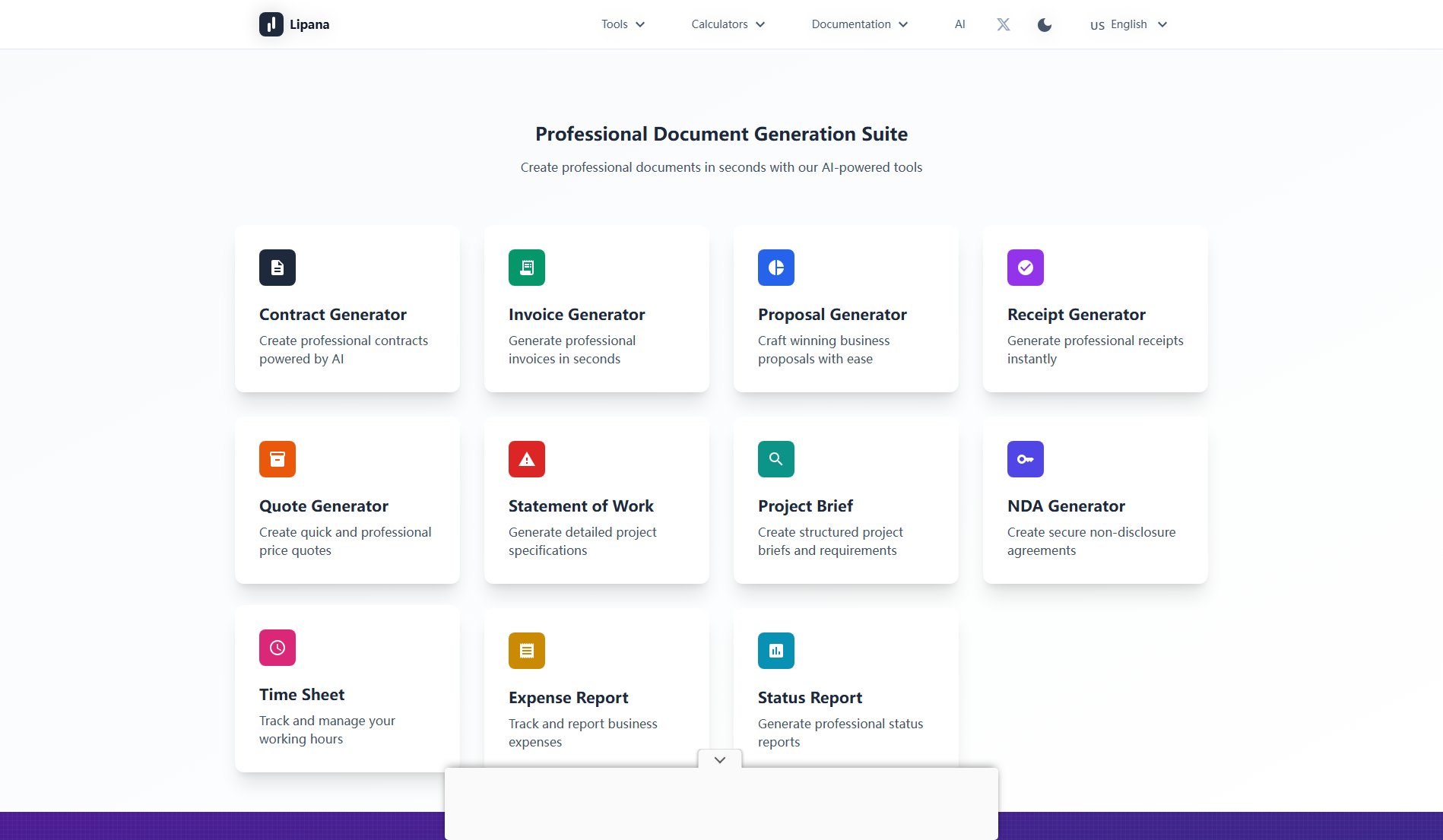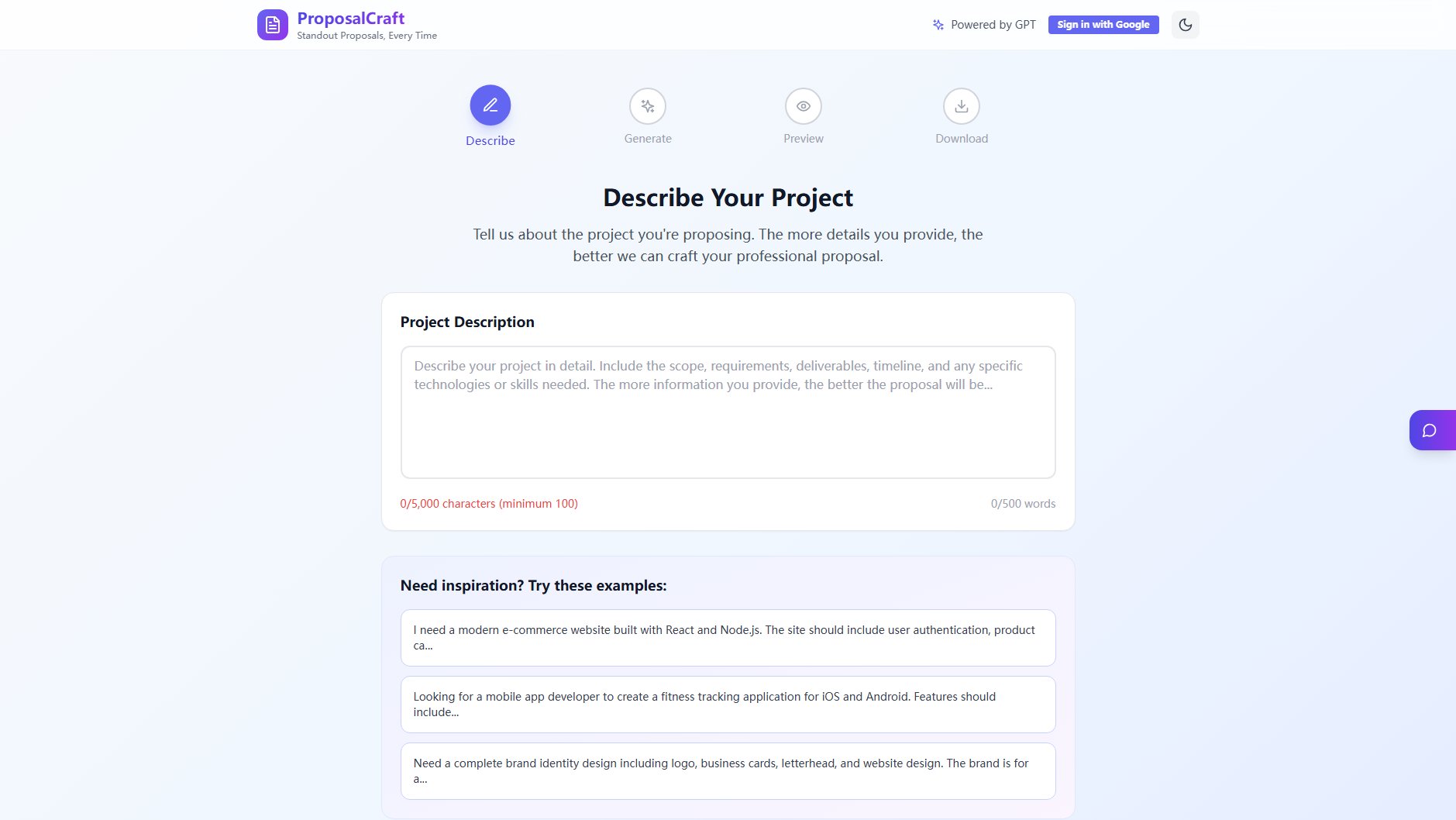TechBaro
Track Freelance IT Market Trends with Real-Time Data
What is TechBaro? Complete Overview
TechBaro is a community-driven barometer that tracks the real-time state of the IT freelance market. It collects anonymous weekly check-ins from freelance developers, engineers, and tech professionals worldwide to provide honest insights about workload, demand, and market outlook. The tool helps freelancers make smarter pricing decisions by comparing their workload to peers and planning for the next 3-6 months. TechBaro is designed for IT freelancers, contractors, and independent tech professionals, including frontend/backend developers, DevOps engineers, data scientists, and product managers. It solves the pain points of lack of real market data and helps freelancers understand when to raise rates, compare their workload, and plan ahead.
TechBaro Interface & Screenshots

TechBaro Official screenshot of the tool interface
What Can TechBaro Do? Key Features
Real-Time Market Temperature
TechBaro provides a real-time market temperature score based on data from over 1,247 freelancers. The score ranges from 0 (Ice Cold) to 100 (On Fire), helping freelancers gauge the current market demand and sentiment.
Utilization Rates
Freelancers can see how busy their peers are by tracking utilization rates. This feature shows the percentage of time freelancers are working, helping users understand if their workload is normal or if the market is experiencing high demand.
Market Outlook
TechBaro aggregates freelancers' expectations for the next 3 months, providing an optimism score. This helps users plan ahead and make informed decisions about their freelance careers.
Anonymous Submissions
All submissions are 100% anonymous, ensuring privacy and encouraging honest feedback. Freelancers can share their market outlook without fear of identification.
Role and Region Filtering
Users can filter data by specific roles (e.g., Frontend Developer, DevOps Engineer) and regions (e.g., Europe, North America) to get tailored insights relevant to their niche.
Best TechBaro Use Cases & Applications
Pricing Decisions
A freelance developer uses TechBaro to see that the market temperature is high (🔥 72) and utilization rates are up. This indicates strong demand, prompting them to raise their rates for new projects.
Workload Comparison
A DevOps engineer checks TechBaro and notices their workload is lower than the median utilization rate. They decide to reach out to their network for more opportunities.
Market Planning
A product manager sees that the 3-month outlook is optimistic (58% expect improvement). They decide to invest in marketing their services to capitalize on the upcoming demand.
How to Use TechBaro: Step-by-Step Guide
Sign in to TechBaro using your Google or GitHub account to ensure secure and spam-free submissions.
Share your current market outlook by answering 6 quick questions about your workload, offers received, and market optimism. This takes less than 1 minute and is 100% anonymous.
View the aggregated market data, including the TechBaro Index, utilization rates, and optimism scores, to understand the current freelance IT market trends.
Filter the data by role and region to get insights specific to your niche and location.
Use the insights to make informed decisions about your freelance rates, workload, and future planning.
TechBaro Pros and Cons: Honest Review
Pros
Considerations
Is TechBaro Worth It? FAQ & Reviews
TechBaro is a community-driven barometer that tracks the real-time state of the IT freelance market by collecting anonymous weekly check-ins from freelancers worldwide.
Yes, TechBaro is 100% free with no premium tiers or hidden fees. It's built by freelancers for freelancers, with no corporate agenda.
Your individual responses are never published or shared—only aggregated, anonymized data is displayed. OAuth sign-in is required to prevent spam.
You can submit once per week to ensure data quality and capture real market changes over time.
TechBaro is for IT freelancers, contractors, and independent tech professionals, including developers, engineers, and product managers.








